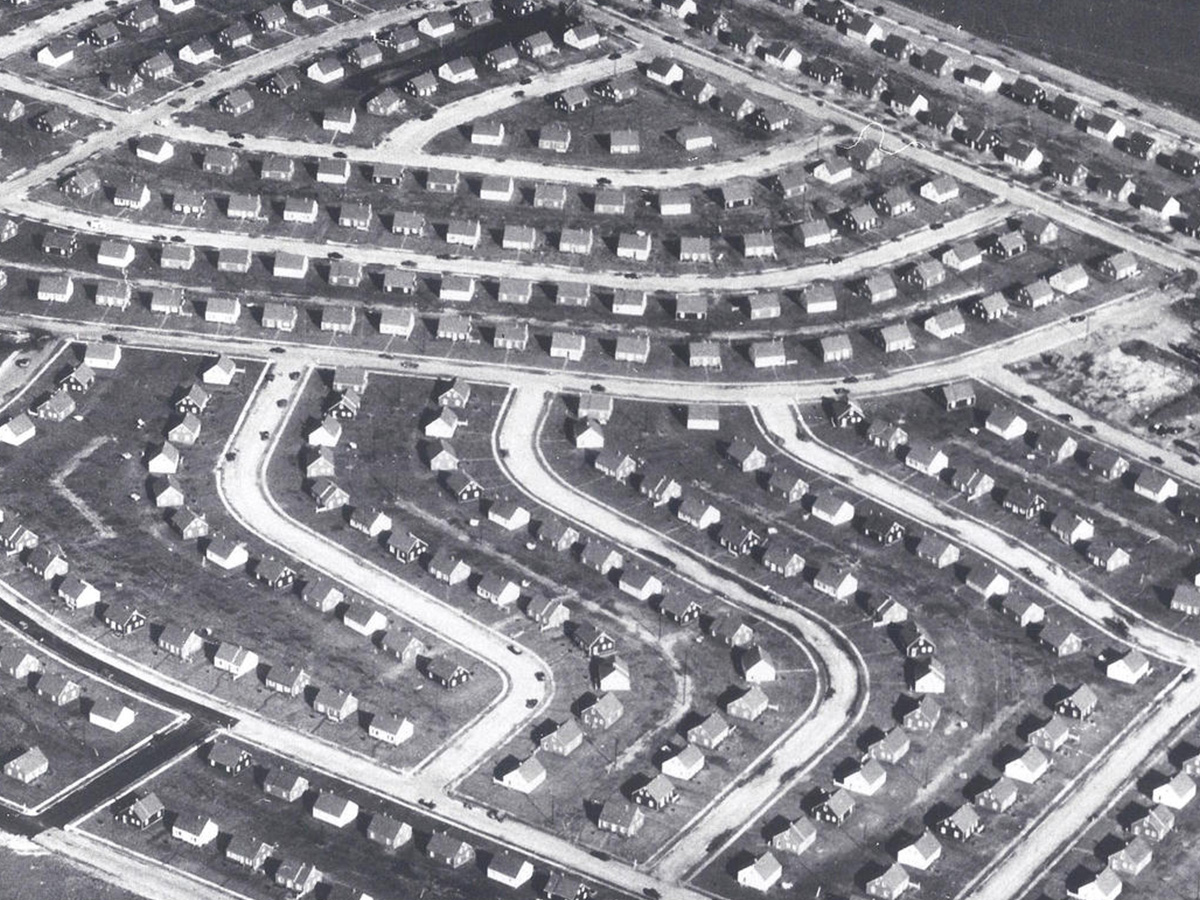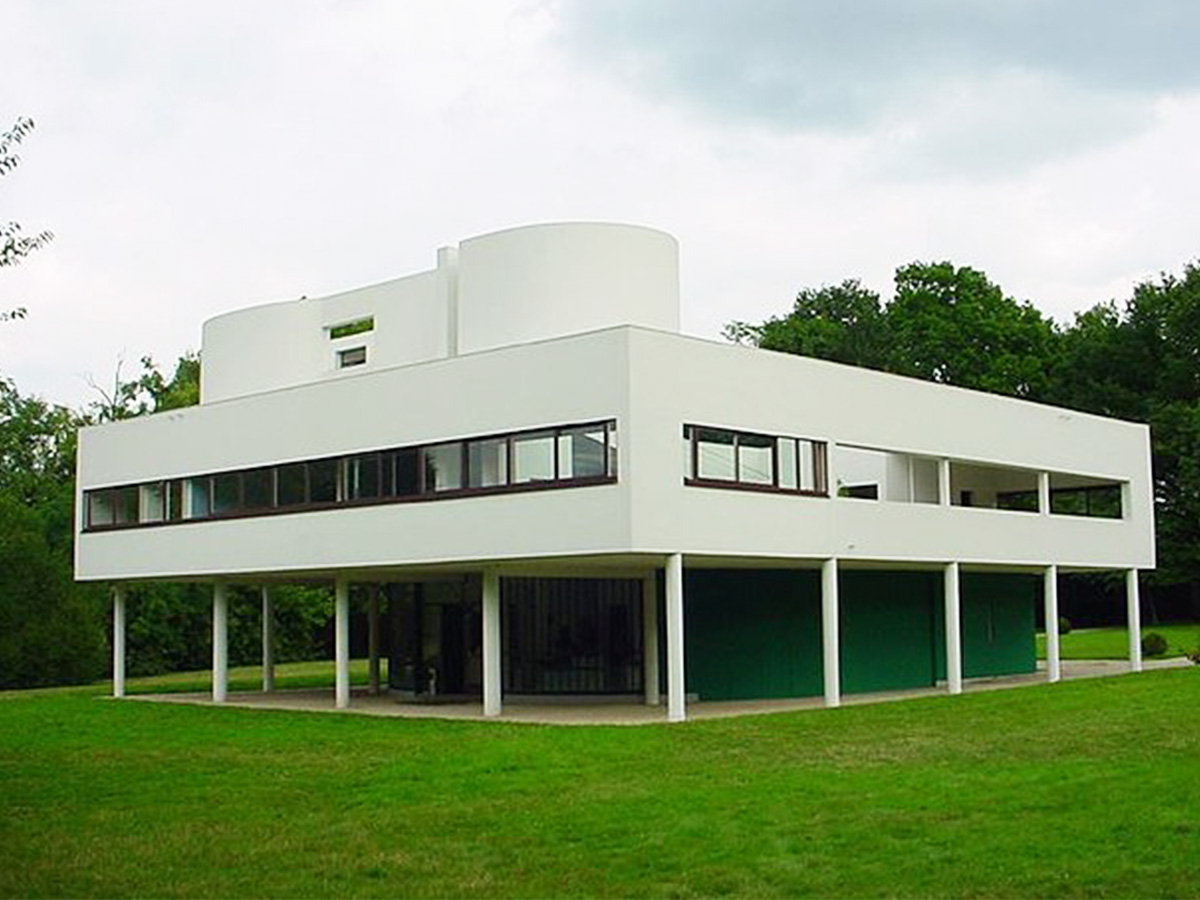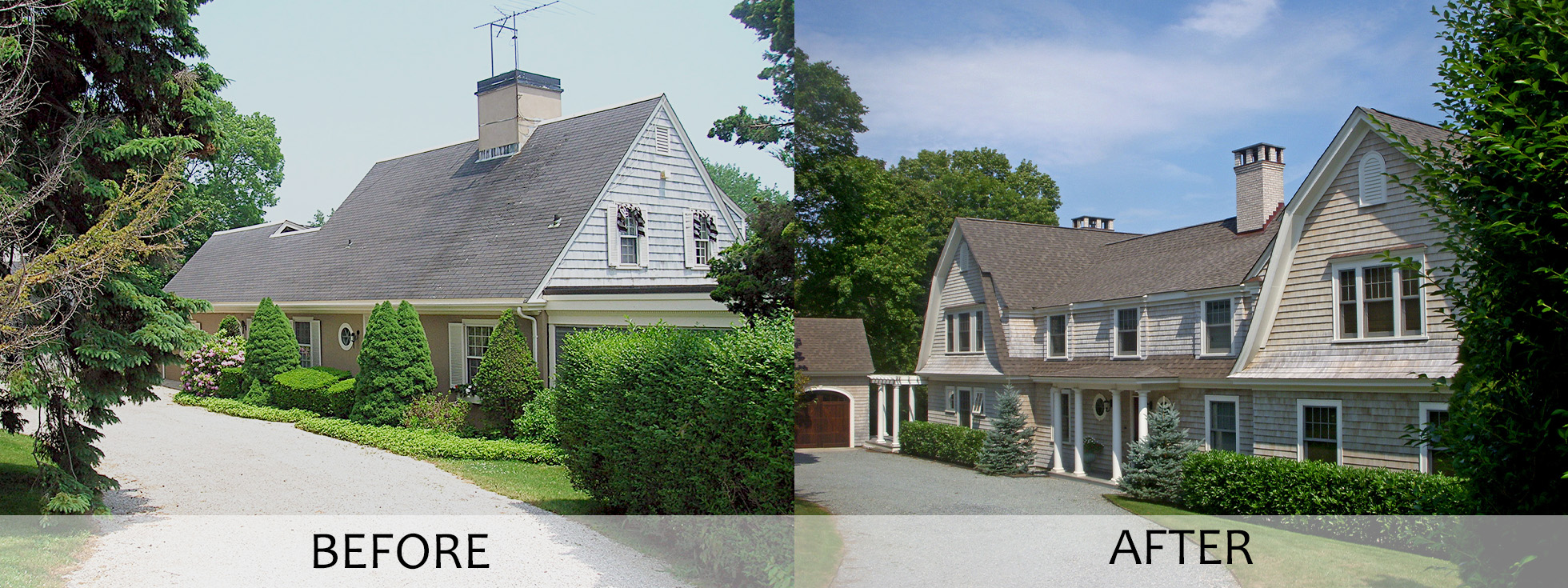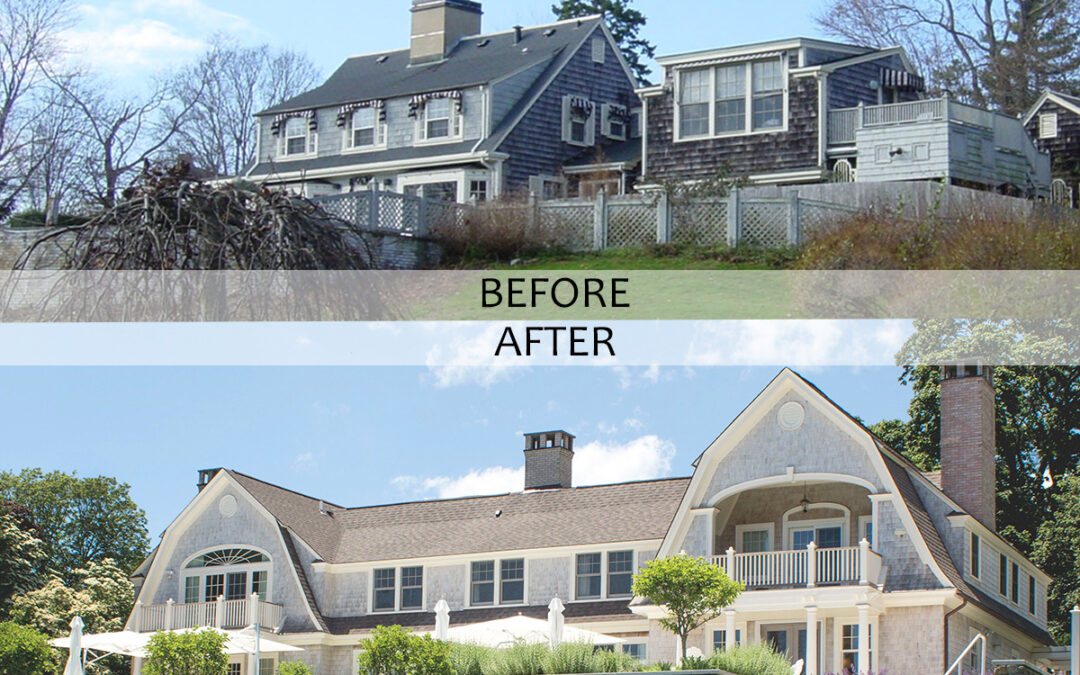East View Before & After of Past Project (Newport, Rhode Island)
There is a difference between “Architecture” and “Building.” Architecture is an art form that aspires to create an experience and impact the imagination and mindset of the user whereas building is simply the enclosing of space for a purely functional purpose. Think of the difference between a 90-minute Academy Award-winning movie and 90 minutes of security tape footage. They are similar in many ways but are diametric opposites in other ways.

Aerial View of Levittown, New York
Because both architecture and buildings are often composed of walls and roofs, many people are liable to confuse the two. That is the reason that probably 95% of all single-family houses are built without the benefit of an architect. A model is developed by a builder without regard to the setting, orientation to the sun, or views and then replicated hundreds or thousands of times because reusing a design allows the builder to put a little more profit into their pockets. As long as the buyer does not demand beauty, excellence in construction, or sympathy for the preside setting of the house then the builder is under no obligation to provide those things. The sole driver in the design of these structure is to build the houses as quickly and cheaply as possible.
In the period after World War II, with millions of servicemen returning home with a desire to leave their parent’s cramped homes and create a place for them to own their own house and land, it is not surprising the vast suburban tracts live the various Levittown’s were built to meet this need. Thousands of identical houses were constructed like cars on an assembly line.

Closer View of The Similar Homes (Levittown, New York)
However, in the period since this vast construction effort, which was magnified by the ten years of the Great Depression when no new construction occurred, the tide of desire has begun to shift. If you return to the Levitowns, you will see that each house has been altered by successive owners to create individualized expressions of different peoples “Dream House.” Similarly in the suburbs that were built with tiny Capes, Ranches, and Split-Levels after the war, many of these areas have gentrified and are in the process of being converted into more traditional neighborhoods with high-quality designs and construction beginning to sweep away the “fast and cheap” construction they are replacing.
Is this a good thing? For the most part, I would say it is, as the new homes are often built with higher quality so they are more sustainable at a time when sustainability is becoming an existential imperative for humanity as a whole. They are also frequently designed by architects who are thinking more about how they will accommodate the owners in the life they want to lead, making those owners’ lives richer and more enjoyable. They are also tend to be re-designed in vernacular styles, so they feel more rooted in their individual communities and fit better into neighborhoods of similarly, but still uniquely, designed structures. This helps knit communities together.

Villa Savoye by Le Corbusier (Poissy, outskirts of Paris, France)
So often during the twentieth century architecture is seen as taking an empty field and building a sculptural (and expensive) structure in the middle of it like Charles Jeanneret’s Villa Savoye. This is indeed a form of architecture, but perhaps the type that is most discordant with the natural evolution of architecture. We at A4 Architecture would argue that the most impactful work is to take a structure that has been built without care and consideration and transform it as much as possible into a work of architecture that fits the neighborhood and the needs of the current owners far better than the original structure. It is not only creating something beautiful and good, but it removes the traces of previously poorly considered buildings in the process. It takes a special kind of artistry to work so seamlessly with a setting that it looks like the new building was always there to begin with. Perhaps there is less of the honor accorded to something entirely bold and new, but there is the great satisfaction of leaving the building far better than when the project began and not having had to tear down the entire building and ship it to a dump in the process.

West View Before & After Images of a Past Project (Newport, Rhode Island)
Explore the transformation of another past project by clicking here.
Looking to remodel your home? Let’s connect.
Join the Architectural Forum to stay up-to-date with architectural news from Rhode Island and abroad.
Ross Cann, RA, AIA, LEED AP, is an author, historian, educator, and practicing architect living and working in Newport, RI. He holds degrees in Architecture and Architectural History from Yale, Cambridge, and Columbia Universities.
At A4 Architecture + Planning we are expert at integrating building codes into our designs to provide safer and more long-lasting building solutions for our clients. If you are interested in learning more about what can do for you reach out to us at any time!
